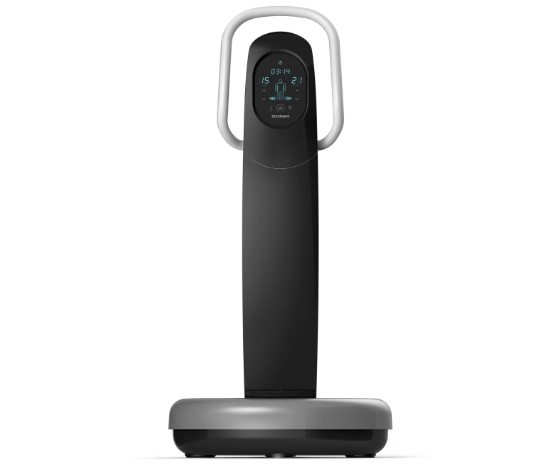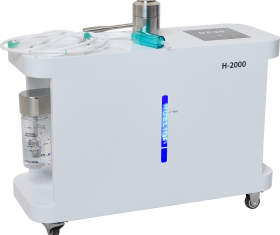Hormones are chemical messengers between tissues and cells. In other words, they refer to a series of signaling molecules that are secreted from various glands of the body, move along with the lymph and blood, reach the cells of each organ, and regulate various physiological phenomena and behaviors. Growth and development, metabolism, sexual function and desire, tissue regeneration, sleep desire, sadness and joy, emotional control, and stress are all phenomena that appear under the influence of hormones. The hormones affect changes in the body condition, all physiological phenomena, and even the mental state, and play a very important role in maintaining homeostasis in the human body. It is no exaggeration to say that it is almost all life phenomena. The means of transporting these hormones are the lymph and blood, and the transport roads are blood vessels and lymphatic vessels. Therefore, the health of lymph nodes, lymphatic vessels, blood, and blood vessels plays a very important role in hormonal balance. Discussed below is the relationship between cholesterol, blood vessels, and blood pressure, which are related to hormones.
Regarding Blood Pressure
In 1999, the World Health Organization (WHO) suddenly changed the standard for hypertension from 160/95 mm Hg to 140/90 mm Hg in London. In one morning, the baseline systolic value dropped by 20. After that, the WHO gradually lowered the blood pressure standard every few years, and now it is 120/80 mm Hg (systolic/diastolic). However, there are still scholars who insist that the standard should be lowered. 70% of the WHO’s operating budget is funded by donations from global pharmaceutical companies.
Blood Pressure Medication Doubles the Risk of Cerebral Infarction
According to a study by Yoichi Ogushi of the Tokai University School of Medicine, the risk of cerebral infarction is twice as high in those who take blood pressure drugs compared to those who do not. Professor Ogushi found that blood pressure medications increase cerebral infarction in a study comparing the health checkup data of 40,000 men and women living in Fukushima Prefecture with national data from 1999 to 2007. High blood pressure, also known as the “silent killer,” has no visible symptoms. Doctors scare patients by saying that if high blood pressure is left untouched, a stroke can lead to hemiplegia or death, so if you don’t take high blood pressure medicine for the rest of your life, you’ll be in big trouble. A stroke is definitely a scary disease. However, it is necessary to know the shocking fact that this stroke is caused by high blood pressure medication. There are three stroke types: cerebral infarction, cerebral hemorrhage (intracerebral hemorrhage), and subarachnoid hemorrhage. Although there are slight differences by country, cerebral infarction accounts for about 85%, cerebral hemorrhage about 12%, and subarachnoid hemorrhage about 3%. Until the mid-1960s, 90% of strokes were cerebral hemorrhages. However, as time passed, cerebral hemorrhage decreased and cerebral infarction increased, and the reverse began around 1980. In the 1990s, cerebral hemorrhage increased to 10-20% and cerebral infarction to 80-90%.
Why Did This Happen?
Poor nutrition weakens blood vessels. In the past, when nutrition was poor, physical labor was severe. In the days when there weren’t many machines, farming, construction work, and housework were all forms of physical labor. As a result, the blood vessels were weak, and physical stress was added, causing the blood vessels to rupture easily, resulting in a brain hemorrhage. That is why the perception that high blood pressure leads to a stroke has spread to doctors and people. Now, nutrition has improved, physical labor has almost disappeared, and the proportion of cerebral hemorrhage has decreased to 10-20%. The cause of cerebral infarction is when a blood vessel is injured and blood clots at the wound site block a blood vessel, or blood clots from the heart flow along the bloodstream and block blood vessels in the brain. If the blood vessels in the brain are blocked and the cells are in an oxygen-deficient state, the brain cells die within a few minutes, and the dead cells are not restored. On the other hand, when the human body lacks the necessary blood for each organ, it raises blood pressure through hormonal action to send blood to where it is needed more quickly. Cerebral infarction does not occur because of high blood pressure, but because organs need more blood or cerebral infarction can occur (lack of blood). It is an action to increase blood pressure to function normally. This is to take medicine by interpreting cause and effect in reverse. Blood pressure drugs like calcium channel antagonists and valsartan block calcium channels, serve as vasodilators, and release water from the body. There are many negative effects associated with using these medications, and numerous studies have shown that these side effects develop into incurable diseases like cancer and dementia. Let’s examine cholesterol, since it has a connection to blood pressure. It is a well-known fact in medicine that people with high blood pressure usually have high cholesterol levels, which can easily lead to arteriosclerosis. Nevertheless, more than 3 trillion cholesterol-lowering drugs are sold worldwide, even though this cholesterol guilt theory has been debunked for a very long time. According to the metabolic syndrome standard of modern medicine, cholesterol levels over 220mg/dL are considered high. According to a study on the relationship between cholesterol and angina pectoris and myocardial infarction in the Japanese lipid intervention test, the lowest mortality rate was in the group with cholesterol levels between 240 and 260 for both men and women. This demonstrates how odd it is that the cholesterol standard is 220. Cholesterol levels that are too high or too low are a problem, but the death rate was higher for those with lower cholesterol levels. According to this study, it was found that cancer deaths were five times more likely in the group with cholesterol levels below 160 than in the group with cholesterol levels above 280. Why does low cholesterol increase cancer cells? When cholesterol levels are low, immune cell function is weakened. It has already been physiologically proven. It is necessary to lower immunity so that rejection does not occur after organ transplantation by using this mechanism in reverse. Although there are individual differences, this drug may lower cholesterol levels below 100. There is no paper anywhere in the world that says people with lower cholesterol live longer. On the other hand, women have, on average, higher cholesterol levels than men. This is because high cholesterol is required to perform the critical work of pregnancy and childbirth. Looking at this from another angle, it can be said that the female body is protected by cholesterol. However, medically, the standard cholesterol level is the same for both men and women, but women have a higher average life expectancy than men. Whether it’s an animal or human being, females are inherently more robust. It has been reported that this is deeply related to female hormones. Female hormones improve blood flow and protect blood vessels by making the walls of blood vessels flexible. Up to the age of 40, women’s blood vessels remain much younger than men’s for this reason. In fact, women are less than half as likely to die from a myocardial infarction or stroke compared to men. The incidence of risk is only one-third for women in their 60s and half in their 70s, compared to men. In Europe, cholesterol-lowering drugs are not prescribed for women. This is because the risk of liver disease and cancer due to side effects of the drug is higher than the risk of stroke or heart disease. Hormones can cause abnormalities in the body when they are secreted too much or too little and the function of the hormone receptor itself is damaged. We collect and investigate related data to find out how hormone receptors change and balance the signal transduction system in the cell membrane and mitochondria via PBM (photobiomodulation) therapy, the balance of active oxygen via molecular hydrogen inhalation therapy, and hormone imbalance caused by disease and aging.



